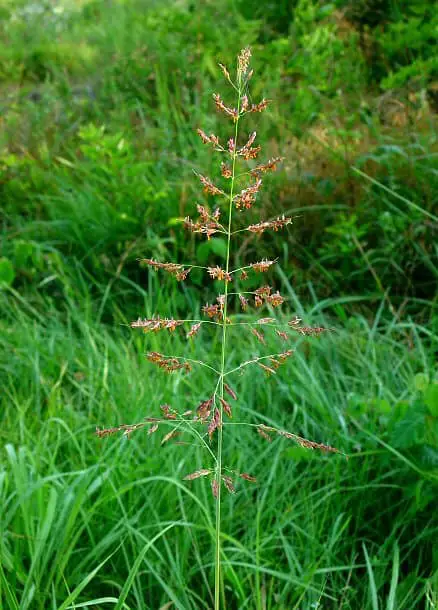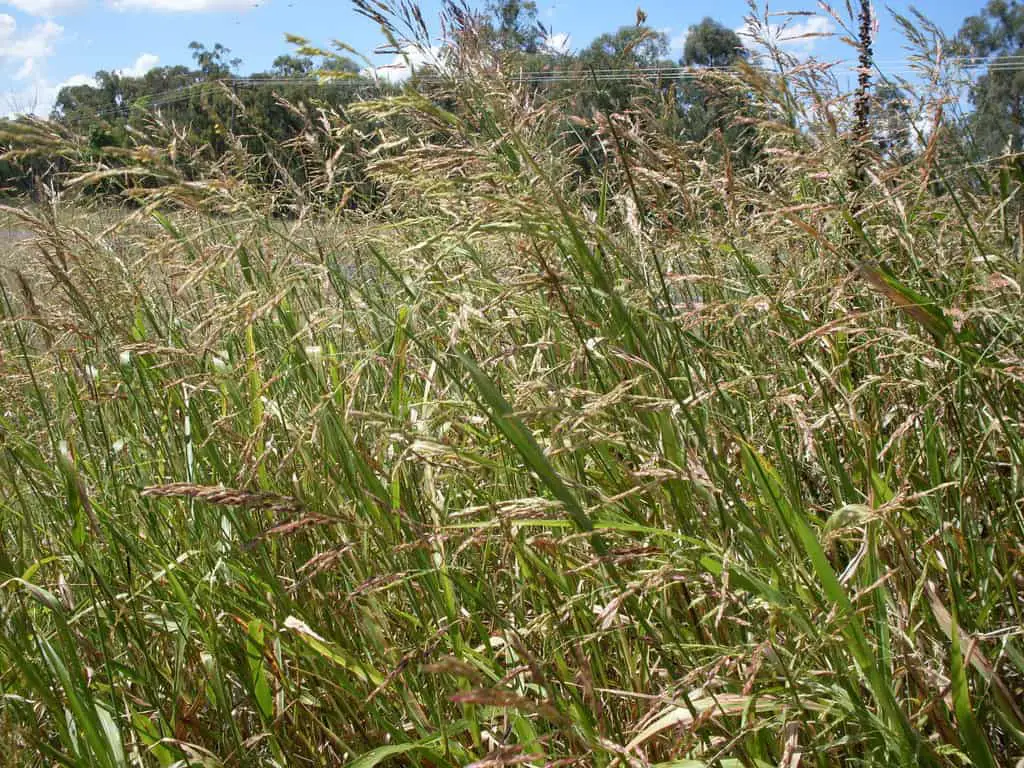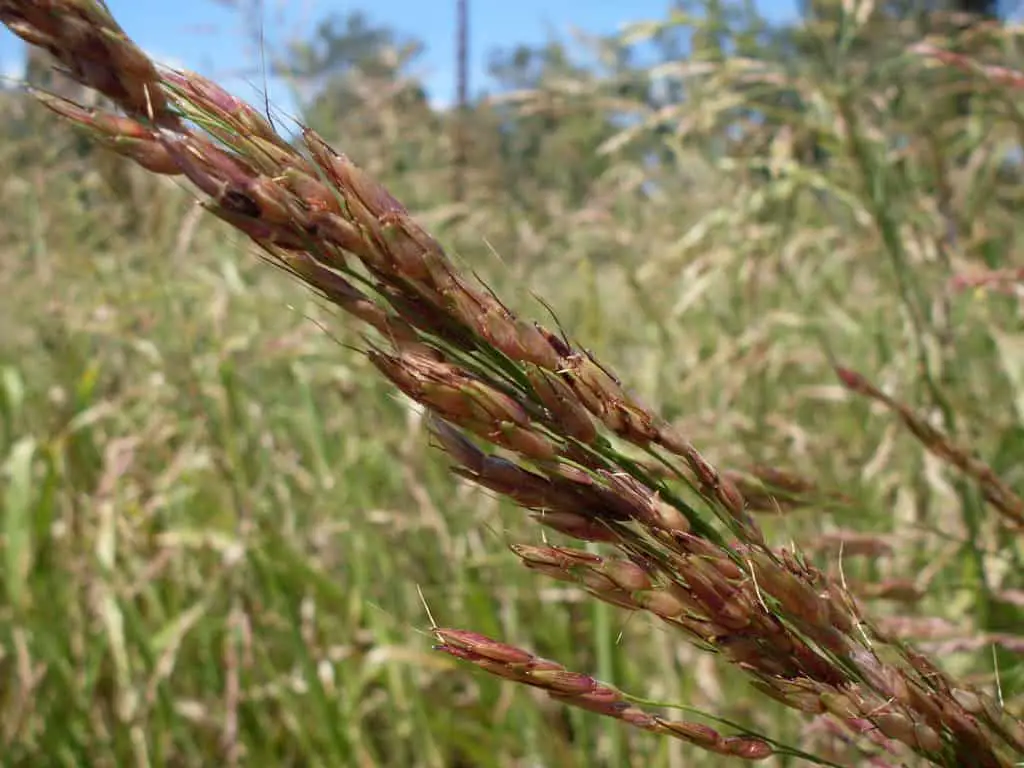One of the most noxious and annoying weeds is taking over your landscape? It is rapidly colonizing and ruining your crops? If you’re bothered with Johnson Grass, read this useful info to learn how to get rid of this invasive weed.

What is Johnson Grass?
Johnson Grass is a plant in the grass family (Poaceae), known by the scientific name of Sorghum halepense. It is a perennial plant that may reach 12 feet (3.7 m) during a flowering phase.
It is native to the Mediterranean region of Europe and Africa, but has been introduces to all continents except Antarctica. It was brought as a forage crop to North America and the US in 1830, but it has caused troubles for farmers, ranchers and landowners ever since.
It was also used to prevent and stop soil erosion, but the plant showed its ‘meany’ side briefly. Nowadays, Johnson Grass is considered a weed, with unflattering title of one of the ten worst weeds in the world. With the tendency to spread out at a very fast rate, Johnson Grass dominates flora and crops in a short time.
It is most invasive in the Southeast parts of the US where it’s widely escaped from cultivation. In 24 states in the US Johnson Grass is even prohibited, and landowners are required to kill this highly invasive weed.
Self-compatibility, immense seed production, effective dispersal techniques, seed dormancy and seed longevity are features which make Sorghum halepense a prolific weed.
How to Identify Invasive Johnson Grass?
The most distinguishing characteristics of Johnson Grass are the ribbed leaf sheath, the extensive rhizome system and the conspicuous midrib, while the panicle is large (50 cm high) and purplish. Unbranched stems can grow to 6 to 7 feet (1,8–2,1 m) tall.
It usually colonizes orchards, vineyards, ditchbanks, disturbed sites, roadsides, fields, and agronomic and vegetable crop fields. Johnson Grass is sometimes mistaken for shattercane, but unlike Johnson Grass, shattercane doesn’t produce rhizomes and it’s an annual plant.

What Is the Lifecycle of Johnson Grass?
Although Johnson Grass is a season perennial, in cold climates it can be an annual plant. Besides its effective dispersal techniques, this weed is prolific because seeds can remain dormant, even for 10 years, and produce plants over several years. Johnson Grass has immense seed production and a single plant can produce more than 80,000 seeds per one season.
About 3 to 4 weeks are enough for rhizome to develop from a seed. When rhizome is established, it starts producing a large number of shoots and roots (a single Johnson Grass can produce more than 5,000 nodes in a single season).
When the temperature starts increasing in the spring, new-formed rhizomes and old ones which have survived the winter begin forming a large number of shoots. The flowering phase begin two months after the growth commences, and each flower panicle of Johnson Grass forms hundreds of seeds in a single flowering season.
Seedlings grow slower than rhizomes and they need a higher temperature to germinate than a rhizome needs to produce a sprout, but both development patterns are fast enough to rapidly colonize a variety of different environments.
Can You Get Rid of Johnson Grass Organically?
The best way to eliminate Johnson Grass is actually a combination of several methods because it’s almost impossible to remove this weed by using a single method. For successful removal of Johnson Grass, you will have to implement multiple control strategies.
Johnson Grass spreads by seeds and underground rhizomes, therefore, the control measures must be tough. That’s why you must consider not only the prevention of seed production and spread of seeds, but you also must destroy seedlings before rhizomes are formed and kill existing rhizomes too.
Hand control and hand pulling should usually be avoided because it will only break the plant and leave the rhizome of the plant undamaged, so the plant will grow back again.
But, you can try to remove the plant physically by removing clumps and small, individual plants in early spring before they begin to produce seeds, just after the rain when the soil is soft. Pull out the whole plant and the rhizome. This is a crucial step if you want to prevent the seeds to spread to areas that are not infested.
Another organic alternative is applying a vinegar on small and individual plants, usually in spring when rhizomes are forming food reserves. If you apply vinegar on young plants, the acetic acid may kill them and prevent further spreading. You can cover desirable nearby plants with a tarp to protect them from harmful acid. Repeat the application until Johnson Grass dies.

Can I Use Herbicides to Remove Johnson Grass?
Unfortunately, the eradication of Johnson Grass is not possible by applying only a herbicide. A single application of a herbicide is not enough to be an effective Johnson Grass killer and it seldom removes weed populations from a certain area.
But if you choose a Johnson grass herbicide program, combined with another method such as tilling, the elimination of Johnson Grass may be efficient. The combination of cultural methods and repeated herbicide applications may remove this noxious weed.
Herbicides are usually non-selective and they can harm your crops and non-target plants, so make sure you apply it only on the target species.
Herbicides to control Johnsongrass:
- Grass herbicide – You can use a post-emergent herbicide which contains an active ingredient such as Fluazifop which can control before it emerges.
- Glyphosate – You can also attempt to apply Glyphosate to Johnsongrass which has already emerged to supress it from continuing growth.
Is Johnson Grass Toxic to Cattle and Other Farm Animals?
Under certain environmental conditions such as drought, extreme heat, frost and heavy rain, Johnson Grass can become extremely toxic to cattle. In those adverse conditions, Johnson Grass may develop cyanogenetic glycosides, but these toxins can vary among Johnson Grass population.
Johnson Grass may also form these toxins at certain development stages. This weed is most toxic during the active growth stage, so the poisoning can be prevented if cattle graze only 15-18 inches (38-46 cm) tall plant. Cattle and other ruminants are more susceptible to glycoside poisoning than monogastric herbivores like horses.